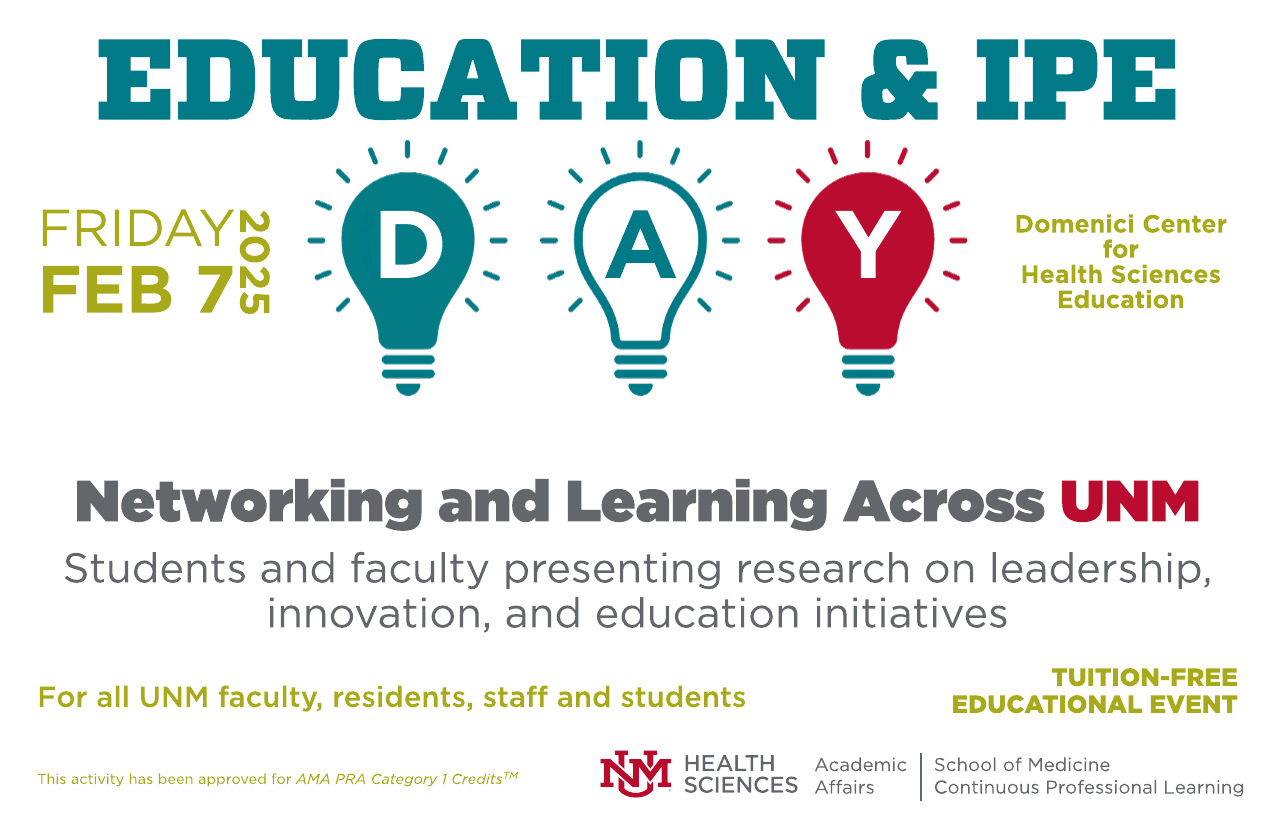
HSC Education Days
Gains in Performance from Step 1 and Step 2: Potential Role of Clinical Context
Document Type
Presentation
Publication Date
4-29-2022
Abstract
Research Question: We explored the relationship between Step 1 and Step 2 performance and how curricular changes during the pandemic impacted the relationship.
Background: During the 2020-2021 academic year, the University of New Mexico, split the clerkship curriculum into virtual and clinical components due to the CoVid pandemic. This offers an opportunity to explore the relative contributions of didactics and clinical experience to knowledge acquisition (IM Shelf) and knowledge retention (Step2CK).
Methods: We compared average de-identified student percentile scores on Step 1 and Step 2 in the traditional curriculum (Class of 2021) for students scoring above (A50) and below (B50) the 50th percentile on Step 1. We compared de-identified end-of-clerkship NBME IM shelf exam averages between students in a 3-wk virtual clerkships program (Class of 2022), to a historical control of traditional clerkships (Class of 2021) and compared shelf exams with USMLE Step 1 scores. We used chi-squares, t-tests, and multiple regression models to test for differences by type of clerkship.
Results: In the traditional curriculum, A50 student were 2.6 times [(CI) =1.55-4.37] more likely to score above the 50th percentile on Step 2 than B50 students. B50 students showed relatively greater mean improvement than A50 students on Step 2 (24.28 vs 9.94 points (p
Conclusions: A subgroup of students (B50) may particularly benefit from the high-context-learning environment of clinical practice. When a comparable group of students in the pandemic year took the IM Shelf without the benefit of clinical experience, their low Step 1 percentile remained a stronger risk factor for low IM Shelf performance.
Recommended Citation
Morrison, Ann; Deirdre Hill; Maria-Eleni Roumelioti; Tom Markle; Nancy Shane; Alexis N. Leyba; and Roger Jerabek. "Gains in Performance from Step 1 and Step 2: Potential Role of Clinical Context." (2022). https://digitalrepository.unm.edu/hsc_ed_day/110
